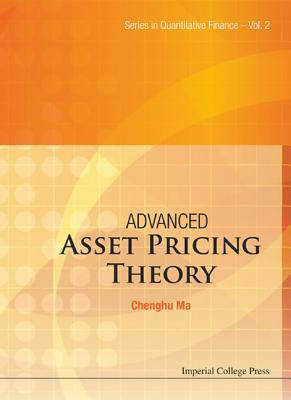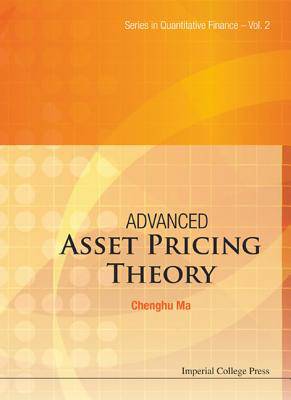
- Afhalen na 1 uur in een winkel met voorraad
- Gratis thuislevering in België vanaf € 30
- Ruim aanbod met 7 miljoen producten
- Afhalen na 1 uur in een winkel met voorraad
- Gratis thuislevering in België vanaf € 30
- Ruim aanbod met 7 miljoen producten
Zoeken
€ 193,95
+ 387 punten
Omschrijving
This book provides a broad introduction of modern asset pricing theory with equal treatments for both discrete-time and continuous-time modeling. Both the no-arbitrage and the general equilibrium approaches of asset pricing theory are treated coherently within the general equilibrium framework.The analyses and coverage are up to date, comprehensive and in-depth. Topics include microeconomic foundation of asset pricing theory, the no-arbitrage principle and fundamental theorem, risk measurement and risk management, sequential portfolio choice, equity premium decomposition, option pricing, bond pricing and term structure of interest rates. The merits and limitations are expounded with respect to allocation and information market efficiency, along with the classical expectations hypothesis concerning the information content of yield curve and bond prices. Efforts are also made towards the resolution of several well-documented puzzles in empirical finance, which include the equity premium puzzle, the risk free rate puzzle, and the money-ness bias phenomenon of Black-Scholes option pricing model.The theory is self-contained and unified in presentation. The inclusion of proofs and derivations to enhance the transparency of the underlying arguments and conditions for the validity of the economic theory makes an ideal advanced textbook or reference book for graduate students specializing in financial economics and quantitative finance. The explanations are detailed enough to capture the interest of those curious readers, and complete enough to provide necessary background material needed to explore further the subject and research literature.
Specificaties
Betrokkenen
- Auteur(s):
- Uitgeverij:
Inhoud
- Aantal bladzijden:
- 816
- Taal:
- Engels
- Reeks:
- Reeksnummer:
- nr. 2
Eigenschappen
- Productcode (EAN):
- 9781848166325
- Verschijningsdatum:
- 15/03/2011
- Uitvoering:
- Hardcover
- Formaat:
- Genaaid
- Afmetingen:
- 157 mm x 231 mm
- Gewicht:
- 1292 g

Alleen bij Standaard Boekhandel
+ 387 punten op je klantenkaart van Standaard Boekhandel
Beoordelingen
We publiceren alleen reviews die voldoen aan de voorwaarden voor reviews. Bekijk onze voorwaarden voor reviews.











